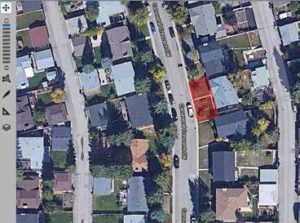I was approached in August 2018 by Mike Sullivan, President of Alberta One-Call (AOC) and holder of various Damage Prevention seats, with an interesting query. Mike asked me (at least in my memory) something approximating, “Joe, you are the handsomest and smartest guy we’ve got. Also, is there a way to determine which is safer: calling in a locate request or placing it online?”
It was an interesting proposition. The qualification of “safety” seemed relatively straightforward. I decided I would use a simplified metric of “Did the excavation result in a utility strike?” Next, it was a matter of determining what datasets were available to me to use as a comparative. Luckily, I am in the enviable position of not only having access to Alberta’s full One Call request database as its Contact Centre Manager, but also that of Alberta’s DIRT database, as the ABCGA DREC former Chair and current data admin. Each database contains a variable set of anonymous information that I was able to pull for qualified analysis.
In DIRT, a voluntary online-based Damage Tracking utility, I analyzed a time interval (in this instance, June 2017 to end of May 2018) of freely submitted utility damage incidents within the cities of Calgary and Edmonton. From there, I pared down my dataset to those damages that referenced an existing Alberta One-Call ticket number.
Utilizing my list of AOC ticket numbers, I then combed through the One Call ticket archives, and began building a table around the incidents where the requestor had utilized our online web service, versus those that called in their request to have an agent process their locate by phone. Then, a comparative was made against the total number of phone and web requests made for those areas (Fig. 1).
In Calgary, the incidence of damage occurred .29% of the time (damages per request) via phone, but only .13% of the time when the request was submitted by web – a 55% decrease. All variables being equal, this showed a stark difference and increased likelihood of a utility strike when a locate request is placed by phone. Edmonton data, with a higher incidence of voluntary DIRT reporting, was even more compelling, showing a .97% damage occurrence via phone and .41% via web.
In addition to this, AOC had introduced a mandate in May 2017 that all web-based requests would be required to contain a work diagram, or user-drawn map of their excavation area (Fig 2).
In both Calgary and Edmonton, a direct corollary can be drawn between an increase in the excavator providing a concise work area to the utility owners and locators, and a decrease in utility strikes in both regions. Though both regions saw only a minor increase in web usage over the two intervals, the upshot is notable.

Armed with this information, AOC has pushed to decrease incidence of utility strikes utilizing a multitude of methods directly relating back to this investigation. First, a new ticket-taking software was introduced that requires web users to map (virtual white-line) their intended excavation area on a satellite map (Fig 3). Second, a mandate has been passed to require all contractor and member requests to be submitted via web beginning in January 2020. We are optimistic these two changes in conjunction will reduce utility strikes in 2020 and beyond, and I cannot wait to review the data!
———-
Josef Rosenberg is Alberta One-Call’s Contact Centre Manager and has been working at AOC for over a decade. Josef formerly chaired the ABCGA’s Data Reporting and Evaluation Committee, and currently sits on the DREC with the Canadian Common Ground Alliance. He can be reached at jrosenberg@albertaonecall.com.



![ESM Sidebar Ad[87] ESM Sidebar Ad[87]](https://excavationsafetyalliance.com/hubfs/ESM%20Sidebar%20Ad%5B87%5D.gif)



Comments